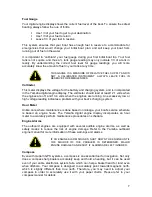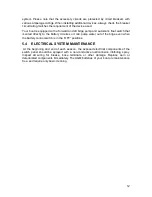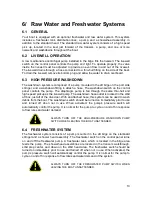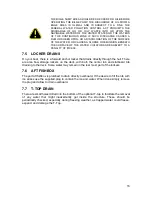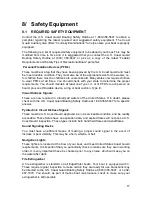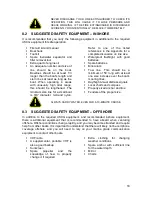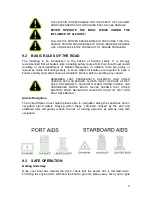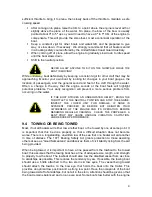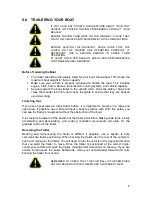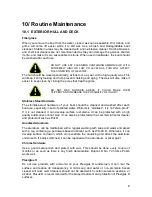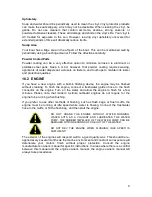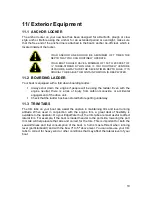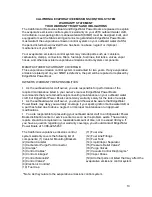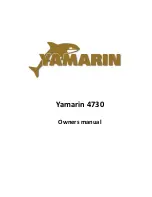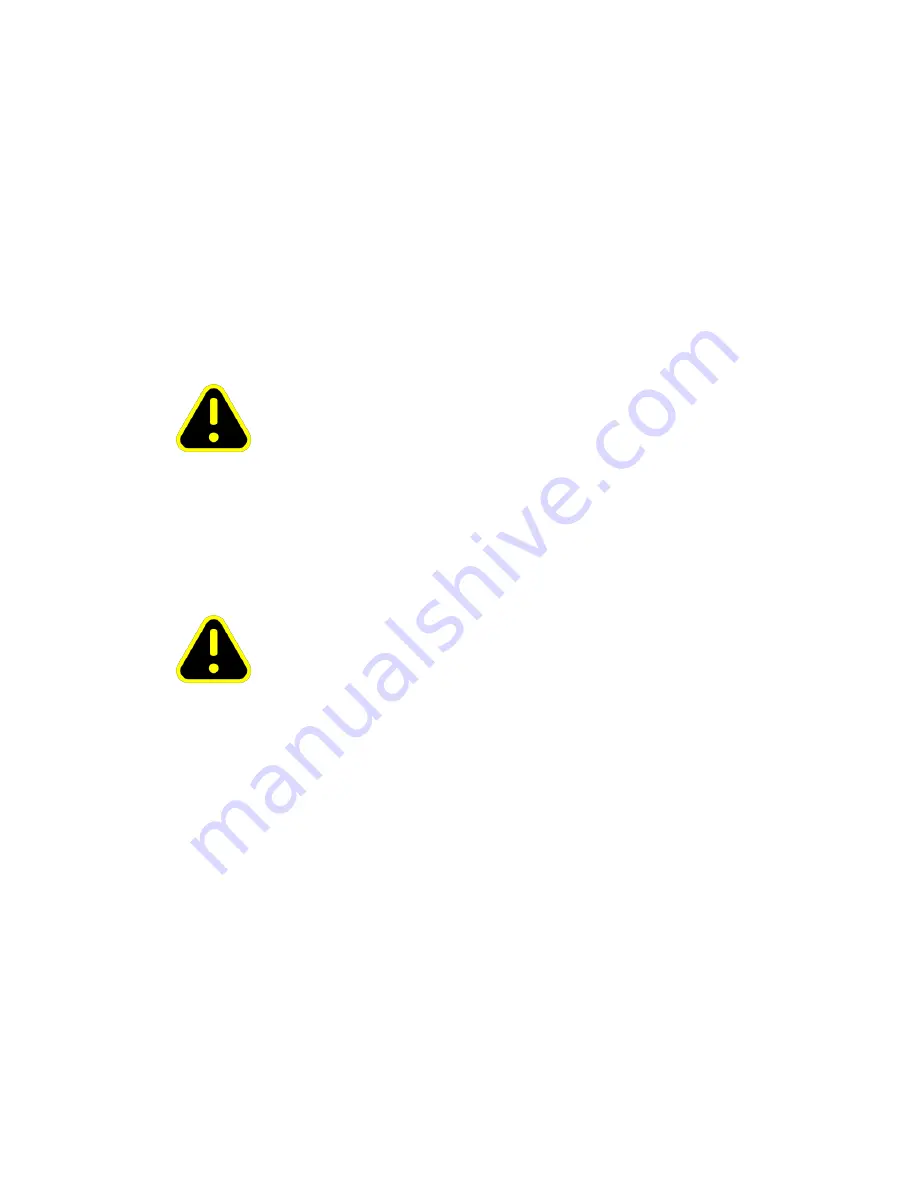
4
sufficient throttle to bring it to plane, then slowly back off the throttle to maintain a safe
cruising speed.
After coming onto plane, raise the trim to a point where the engine is level with or
slightly above the plane of the water. On plane, the bow of the bow is usually
pointed about 3º to 5º up so you will need to have a 3º to 5º trim of the engine to
compensate. This will provide the smoothest, most economical operation of the
boat.
Keep a constant vigil for other boats and watercraft, and be prepared to give
way, or slow down, if necessary. We strongly recommend that all boaters enroll
in a boating safety course offered by the United States Coast Guard Auxiliary.
When coming off of plane, allow the engine to gradually slow down to idle speed
until the boat slows down.
Shift to the neutral position.
NEVER ALLOW ANYONE TO SIT ON THE GUNWALE WHILE THE
BOAT IS MOVING!
While underway, boat defensively by keeping a constant vigil for other craft that may be
approaching. Monitor your own boat by looking for changes in your boat gauges, the
location of passengers, and the general sound and feel of the craft through the water.
Often, a change in the way that the engine sounds or the boat feels will highlight
potential problems. Your early recognition will prevent a more serious problem from
occurring on the water.
IF THE BOAT STRIKES AN UNDERWATER OBJECT, BRING THE
THROTTLE TO THE NEUTRAL POSITION AND STOP THE ENGINE.
INSPECT THE LOWER UNIT FOR DAMAGE. IF NONE IS
APPARENT, PROCEED AS BEFORE BUT HEIGHTEN YOUR
AWARENESS OF THE ENGINE AND ITS OPERATION BEFORE
RESUMING REGULAR CRUISING. CHECK THE PROPELLER. A
BENT PROP MAY CAUSE UNUSUAL VIBRATION, CAVITATION,
AND REDUCED PERFORMANCE.
9.4 TOWING OR BEING TOWED
Most, if not all boaters will either tow another boat, or be towed by one at some point. It
is important that this be done properly so that a difficult situation does not become
worse. There is a longstanding, unwritten law of the sea that one boater will aid another
in time of distress. The 1971 Boating Safety Act grants protection to those assisting
others at sea as
“Good Samaritans” and absolves them of civil liability rising from the aid
being provided.
When being towed, it is important to have a line passed from the towboat to the towed
boat; this assumes that the towing boat has a line of adequate size, length, and strength
to properly tow the boat. The towboat should also tow the disabled vessel from as close
to amidships as possible. This reduces the tendency to yaw. If possible, the towing boat
should use a bridle attached to the two stern ski tow eyes. The vessel being towed
should attach the towline to the bow eye that holds the boat onto the trailer. This
provides an optimal tow position and a strong tow point. Have the occupants of the boat
being towed sit aft of amidships, but not all in the stern. Attention should be given so that
the boat remains balanced and on an even keel. Some boats tow better with the engine
Summary of Contents for 262CX
Page 1: ...262CX ...
Page 5: ...ii ...

